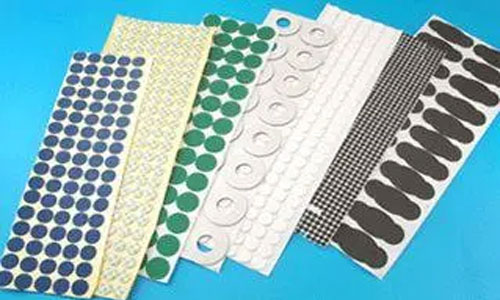
6.1 Advances in Die Cutting Technologies
Die cutting technologies continue to evolve and improve to meet the demands of modern industrial applications. Some of the key advances in die cutting technologies include:
- Laser Die Cutting: Laser technology is being increasingly used in die cutting for its precision and flexibility. Laser die cutting allows for intricate designs and complex shapes to be cut with high accuracy. It is especially useful for cutting materials that are hard to cut with traditional die cutting methods, such as adhesive tapes and thin films.
- Waterjet Die Cutting: Waterjet cutting is a versatile technology that uses a high-pressure stream of water to cut through materials. It is particularly effective for cutting thick and hard materials, such as metals and composites. Waterjet die cutting offers high precision and does not generate heat, making it suitable for cutting heat-sensitive materials.
- Ultrasonic Die Cutting: Ultrasonic die cutting uses high-frequency vibrations to cut through materials. It is commonly used for cutting textiles, plastics, and films. Ultrasonic die cutting offers clean and precise cuts, and it is especially effective for cutting materials that are prone to fraying or melting.
- Hybrid Die Cutting Systems: Hybrid die cutting systems combine multiple cutting technologies, such as laser, waterjet, and ultrasonic, to offer optimal cutting solutions for different materials and applications. These systems allow for greater flexibility and efficiency in die cutting operations.
6.2 Integration of Robotics and Automation in Die Cutting
The integration of robotics and automation is revolutionizing die cutting operations in industrial applications. Robotic systems are being used to automate various aspects of die cutting, including material handling, die changing, and quality control.
- Material Handling: Robots are used to load and unload materials onto the die cutting machine, reducing the need for manual labor and increasing efficiency. They can also sort and stack finished products, streamlining the production process.
- Die Changing: Robotic systems can be programmed to quickly and accurately change dies, reducing downtime and increasing productivity. They can handle heavy and bulky dies, eliminating the need for manual labor and reducing the risk of injuries.
- Quality Control: Robotic vision systems can be integrated into the die cutting process to inspect the quality of the cut pieces. They can identify defects, such as incomplete cuts or material irregularities, ensuring that only high-quality products are delivered.
Automation in die cutting not only improves efficiency and productivity but also enhances workplace safety by reducing the reliance on manual labor and minimizing the risks associated with repetitive tasks.
6.3 Digitalization and Industry 4.0 in Die Cutting Operations
The digitalization of die cutting operations is becoming increasingly prevalent with the rise of Industry 4.0. Digitalization involves the integration of digital technologies, such as cloud computing, data analytics, and artificial intelligence, into the die cutting process.
- Real-Time Monitoring and Predictive Maintenance: Sensors and monitoring systems are used to collect real-time data on the performance and condition of die cutting machines. This data is analyzed using advanced algorithms and machine learning techniques to identify patterns and predict potential machine failures. Predictive maintenance allows for proactive maintenance, reducing downtime and improving machine reliability.
- Remote Access and Control: Die cutting machines can be connected to the internet, allowing operators to remotely monitor and control the machines. This enables real-time adjustments and troubleshooting, improving operational efficiency and reducing the need for on-site presence.
- Data-Driven Optimization: The data collected from die cutting operations can be analyzed to identify areas for optimization and process improvement. Advanced analytics can uncover insights and trends that can lead to increased productivity, reduced waste, and improved product quality.
Digitalization and Industry 4.0 enable greater connectivity, flexibility, and efficiency in die cutting operations, paving the way for smart factories and the era of intelligent manufacturing.
Contact: Pamela
Phone: +86 189 6365 3253
E-mail: info@industryprocess.com
Whatsapp:+86 189 6365 3253
Add: Yajing Industrial Park, No. 59 Shuangjing Street, Weiting Town, Suzhou Industrial Park
We chat
